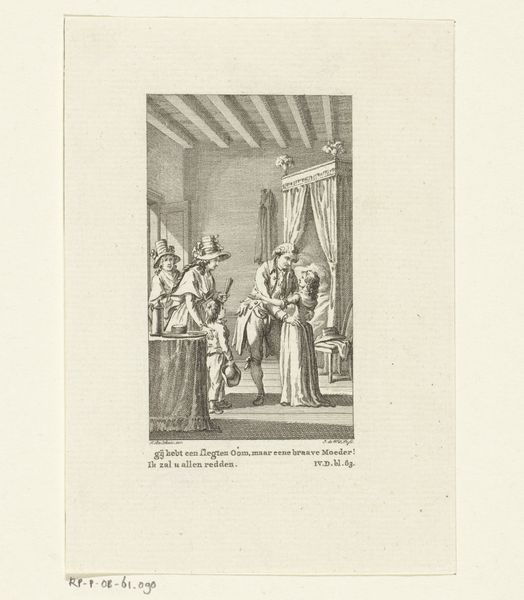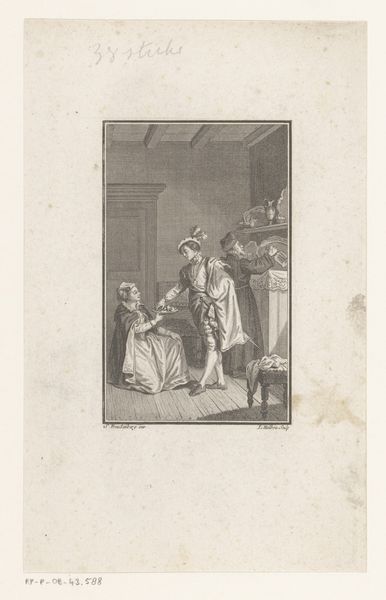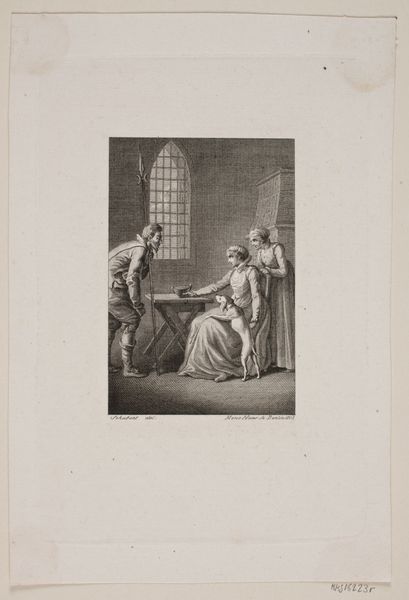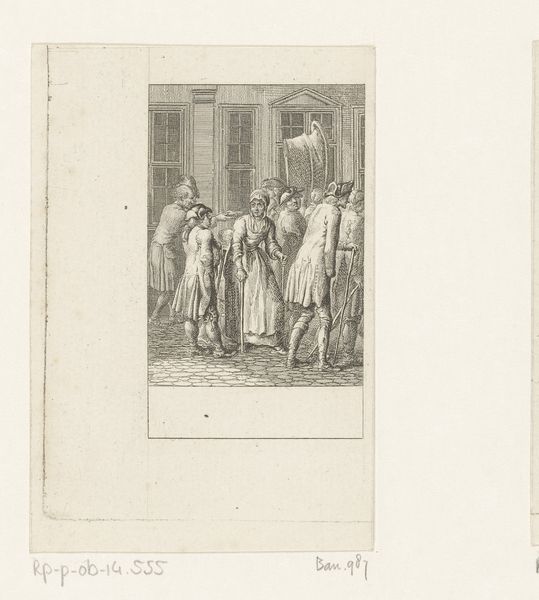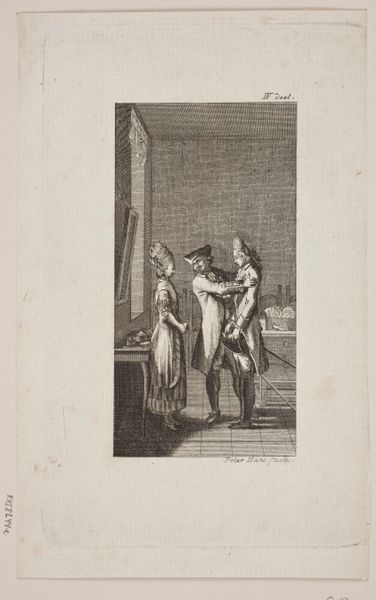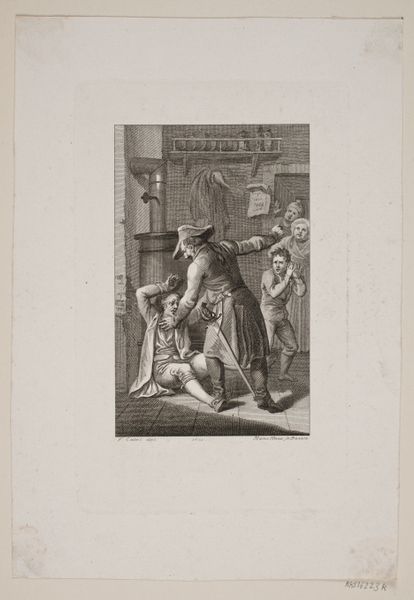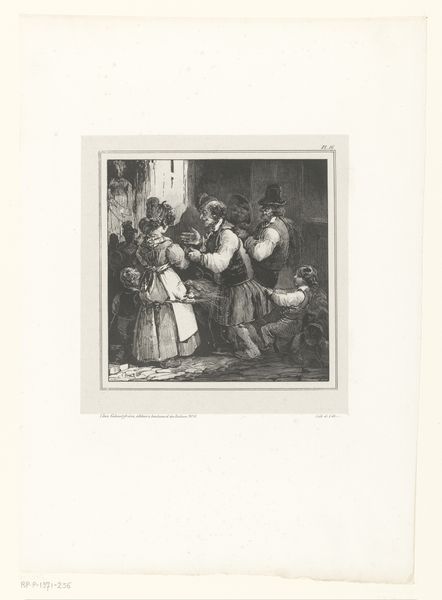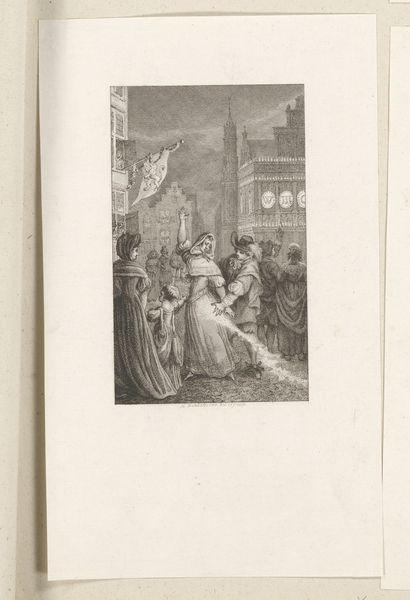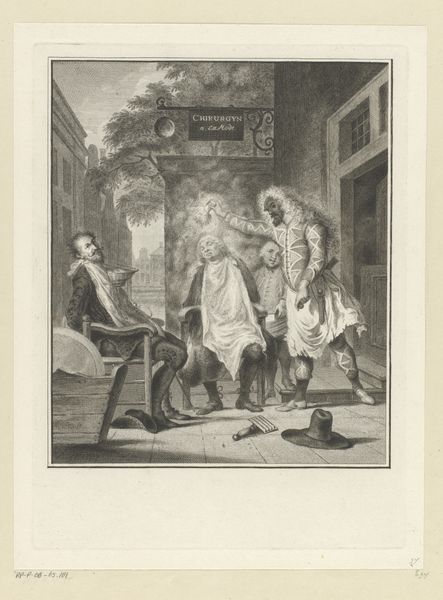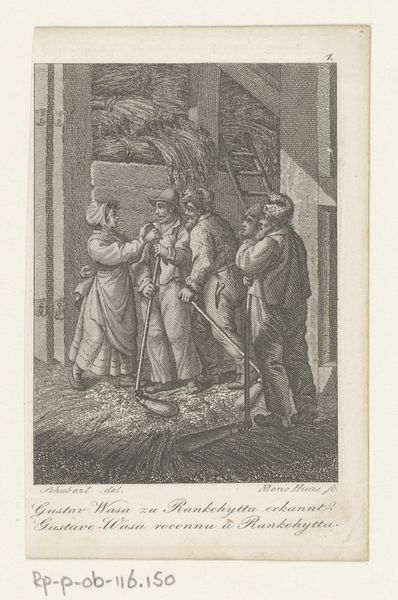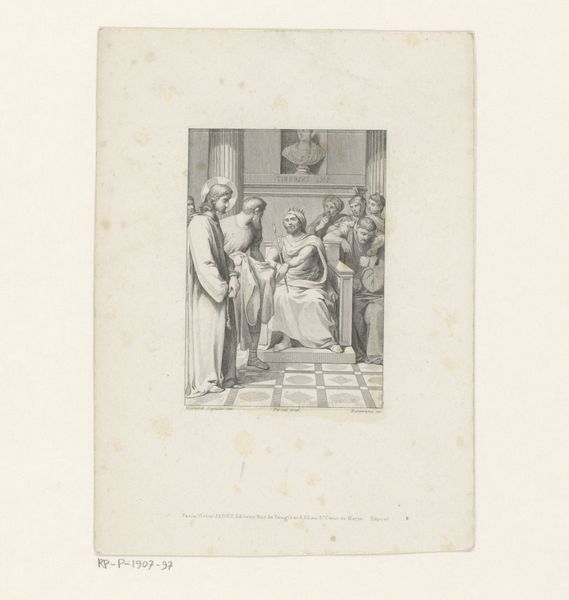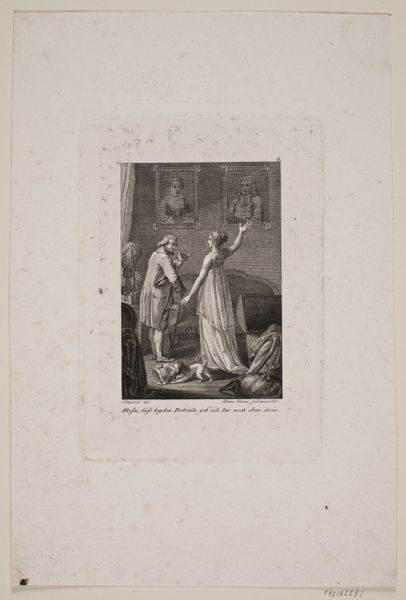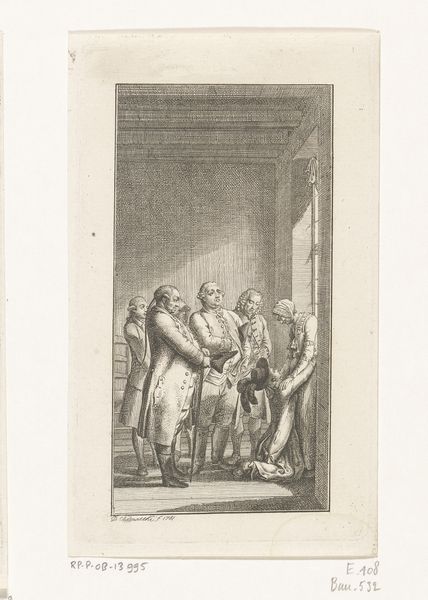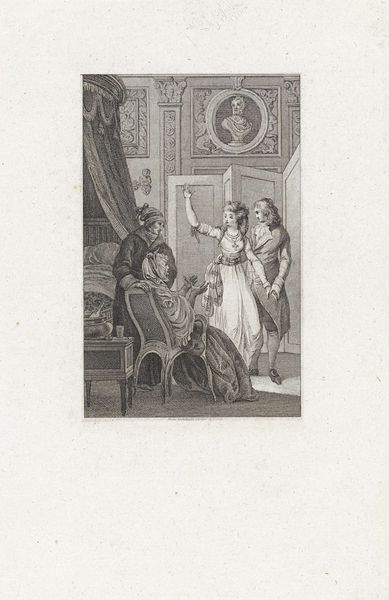
Illustration med kone der standser en herre ved en port mens en tjener ser til 1801
0:00
0:00
drawing, print, pen, engraving
#
portrait
#
drawing
#
neoclacissism
# print
#
pen
#
genre-painting
#
engraving
Dimensions: 124 mm (height) x 86 mm (width) (Plademål)
Editor: This is "Illustration med kone der standser en herre ved en port mens en tjener ser til," created around 1801 by Meno Haas. It's a print, an engraving really. There's something so intriguing in the simplicity of the lines, yet the scene feels so charged. What strikes you about this piece? Curator: Immediately, the etching technique pulls me in. The labor involved in producing the plate, each line carefully incised, speaks volumes. How was Haas's access to materials and printmaking technology? These are vital to consider. Moreover, look at how this print, a multiple, makes this scene accessible to a wider audience than, say, an oil painting could. Editor: That's fascinating! I hadn't considered the wider accessibility of printmaking at the time. Does that impact how we understand the subject matter too? Curator: Precisely. The very *materiality* of this print connects to its potential audience and, I suspect, a growing middle class. Consider the context: a woman stopping a gentleman at a door. It suggests social dynamics around wealth and gender, which, disseminated widely via prints, could fuel discussion and shape public opinion. It is about representation as a material process. What kind of paper did he use, what press did he utilize, and who distributed the final piece? All point toward what was consumed, and how! Editor: So, by focusing on the process and the materials, we can gain insight into the artist's intentions but also the social impact this image may have had? Curator: Exactly! We need to view art-making, consumption, and cultural moments together to understand what art achieves! Editor: Wow, looking at the piece now, it feels much more dynamic. Thinking about how it was made and shared really adds depth. Curator: It does. It’s about interrogating how materials are produced and distributed within a given context. That allows us to go further in the understanding of how such art impacted the moment of its production, distribution and use!
Comments
No comments
Be the first to comment and join the conversation on the ultimate creative platform.
